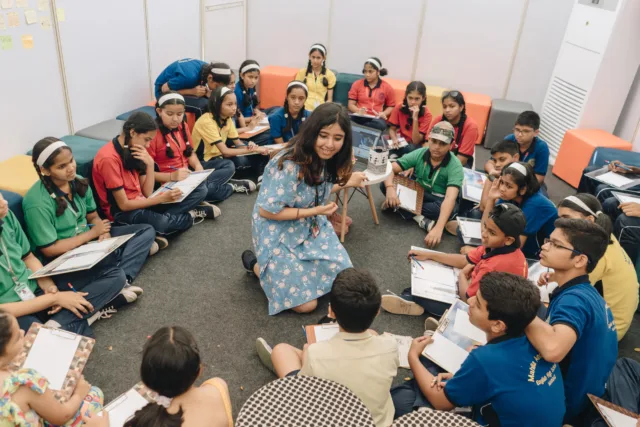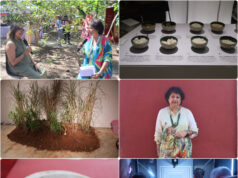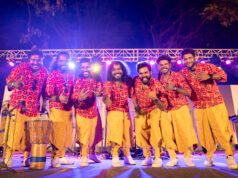For 10-year-old Daniyah Sheikh, the first thing that comes to mind when one says Goa, is fish, rivers and banyan trees. For Audhut, 12, its pristine beaches.
Daniyah and Audhut participated in the ‘Goa Story’ workshop conducted by ThinkArts at the ongoing Serendipity Arts Festival 2023, which aims to encourage children to artistically depict their interpretation of Goa.
“When I think about Goa, I think about fish. I love to eat fish and I see lots of fish around Goa. I also like the beaches, which I visit often. I drew a banyan tree with green and blue, because Goa has many banyan trees everywhere and there are many rivers,” said Daniyah, 10, who was excited to attend the workshop because of her love for art.
Another participant at the workshop, Audhut, associates Goa with its pristine beaches. “I like visiting the Colva beach because there are many activities, like jet skiing, paragliding and motorboating, which I love to do because they are exciting. I drew the beach because it reminds me of Goa,” he said.
The sunny state of Goa is known for its vivacious lifestyle and generally liberating atmosphere. This perspective of Goa has been perpetuated by many to attract tourists for economic purposes, to the point that some locals forget what Goa truly means to them, according to Priya Singh, the facilitator of the children’s workshop titled ‘Goa Stories’ on Day 2 of the Serendipity Arts Festival (SAF) 2023.
But children, she says, have a very pure view of the state. The theme of the workshop was derived from the SAF 2023 project ‘Goa Familia: Let the Sound Linger’ – an exhibition curated by Lina Vincent and Akshay Mahajan that celebrates the essence of the Goan spirit through music and song to interpret cultural and communal experiences. “We utilise the events as a baseline from which we created these workshops and activities. They all feed back into everything that is happening at the Festival,” said Singh.
An initiative curated by ThinkArts under the Young at Art programme, the workshop focused on enabling children to freely express their impressions of Goa via the artistic media of paper, pencil and sketch pens. During the workshop, the children were asked to depict their interpretation of the shape, colour and food associated with Goa.
“Our essential motto has always been that the work that we do for children should be easy for them to understand but not dumbed down. It should still include profundity to enable them to have transformative experiences,” says Singh, who is also the programme coordinator at ThinkArts, an organisation that facilitates high-quality arts events for children and young adults to spark their creative flair.
With a known historical background dating back to the third century BC when Goa was a part of the Mauryan Empire, to its later conquests by the Kadambas, the Adil Shahis of Bijapur and finally, the Portuguese, after which the state gained independence in 1961, Goa has had many phases leading up to its contemporary identity that inform people’s perceptions.
Globally renowned as the cultural hub of India boasting a vibrant heritage and the first point of contact in Asia for the European colonial project during the Age of Discovery in the 15th and 16th centuries, Goa’s essence, according to the experiences narrated by children at the workshop, has a myriad of connotations.






